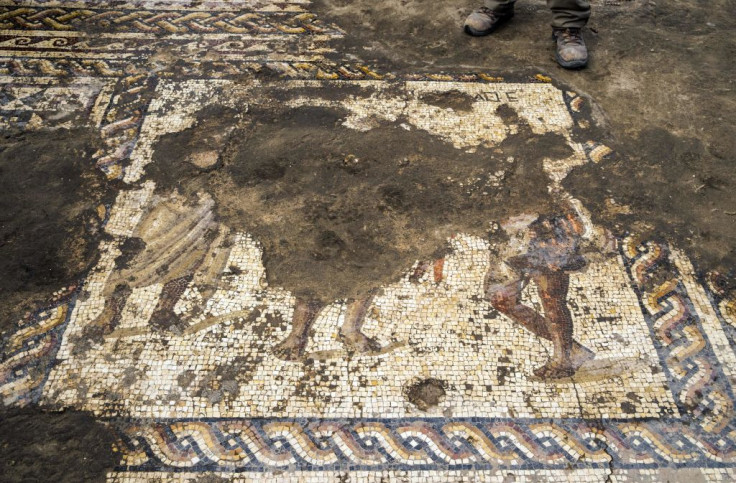Gaza farmer finds rare Byzantine-era floor mosaic while digging earth
In ancient times, the Gaza Strip was a thriving trading route between Egypt and the Levant.
A Palestinian farmer accidentally discovered a Byzantine-era floor mosaic while he was digging the earth to plant an olive tree on his land in Gaza.
The farmer, identified as Salman al-Nabahin, was digging the land along with his son when he chanced upon the rare mosaic.
"I searched on the internet...We learnt it was a mosaic belonging to the Byzantine era. I see it as a treasure, dearer than a treasure. It isn't personal, it belongs to every Palestinian," he told Reuters.
The Palestinian Ministry of Tourism and Antiquities said that the mosaic dating from the 5th to 7th centuries was found in an area less than a kilometre from the border with Israel.
"We are waiting to learn more secrets and cultural values, in the various eras that lived on the land of Gaza," the ministry officials wrote in a post on its Facebook page.
The pictures shared on the ministry's social media page show several mosaic panels featuring colourful animals and birds. It is being termed one of the greatest archaeological treasures found in Gaza.
"These are the most beautiful mosaic floors discovered in Gaza, both in terms of the quality of the graphic representation and the complexity of the geometry," archaeologist René Elter, from the French Biblical and Archaeological School of Jerusalem, told the Associated Press.
📍*بيان صادر عن وزارة السياحة والآثار، بخصوص الكشف الأثري شرق البريج*✍🏻 تؤدي وزارة السياحة والآثار دورها السيادي في ترسيخ الوجود الحضاري للشعب الفلسطيني، وتعزيز حفظ الموروث الثقافي التاريخي...
"Never have mosaic floors of this finesse, this precision in the graphics and richness of the colours been discovered in the Gaza Strip," he added. The ministry has now invited international experts to come and complete the excavation process on the site.
It is not the first time that a rare discovery has been made in the region. The coastal strip has a wealth of ancient ruins. In ancient times, the Gaza Strip was a thriving trading route between Egypt and the Levant.
It is thought the Byzantine settlement continued to exist until the 7th century when the Christians were expelled and replaced by Muslim invaders. Remains from this period include large numbers of containers that were used for trading olive oil.
The settlement was probably destroyed in a great earthquake near the end of the 8th century AD, according to historians.

© Copyright IBTimes 2025. All rights reserved.






















